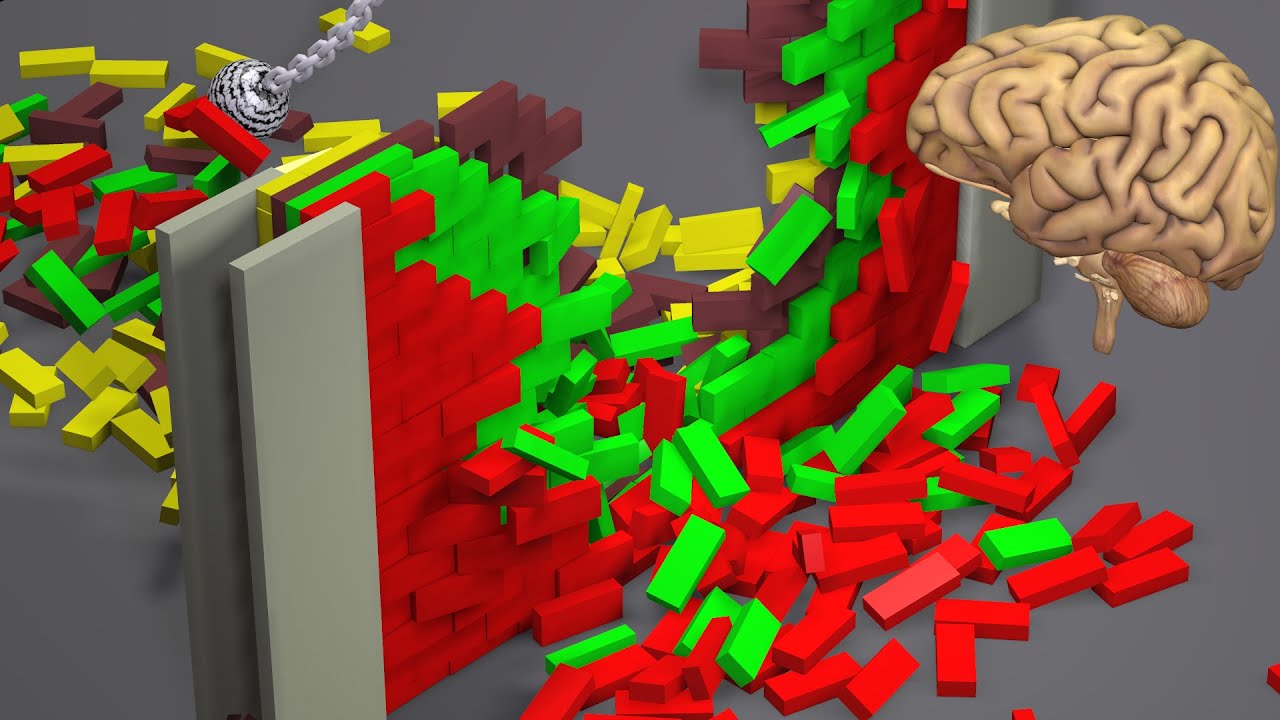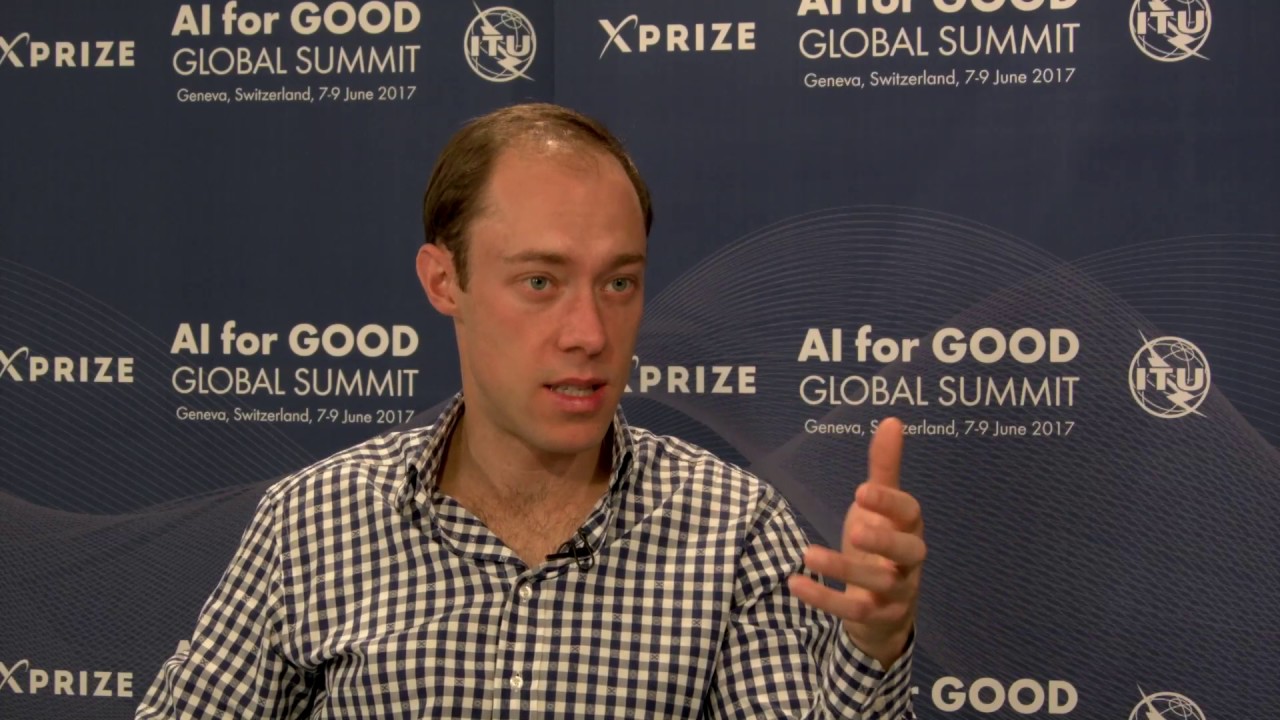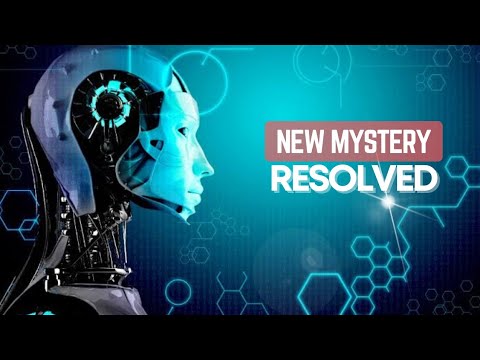Physics Videos by Eugene Khutoryansky
How physics simulations can predict future probabilities, and applying this to the human brain. My Patreon page is at https://www.patreon.com/EugeneK
Source
Physics Simulations and Simulating the Human Brain




To see subtitles in other languages: Click on the gear symbol under the video, then click on "subtitles." Then select the language (You may need to scroll up and down to see all the languages available).
–To change subtitle appearance: Scroll to the top of the language selection window and click "options." In the options window you can, for example, choose a different font color and background color, and set the "background opacity" to 100% to help make the subtitles more readable.
–To turn the subtitles "on" or "off" altogether: Click the "CC" button under the video.
–If you believe that the translation in the subtitles can be improved, please send me an email.
How did you make this wonderful animation
I played this at 1.25 speed
Amazing video, especially the idea of the handicraft simulation of a brain… My vote: its conciousness is 100% legit.
The paper analogy is disturbing. If the paper is conscious, where is its experience? Despite our "perfect" knowledge of the simulation, we would never glean subjective qualia, like "redness". We would be able to tell when the paper is seeing a red object, but where would lie the actual experience?
I have to seriously consider that conciousness as we experience it may not be simulatable, and am almost forced to conclude that experience exists outside space, which is unsettling.
Experience does seem to exist within time though…
which raises another question. How exactly does the paper mind experience time? The easy answer is than whenever you perform a step of the simulation, a tiny interval of time passes. Perhaps the Planck time or something of the sort. In this view, the paper mind seems a lot like us after all. After some education and experience, it would learn what seconds and hours are, develop memories, and count time only when we perform the simulation.
But this raises another problem. What IS "performing the simulation"?! There is no causal connection between one step of the simulation and the next, because we could simply choose not to perform the next step. This seems to render time non-existant. But you may argue that one step DOES imply the next through the logic of our defined physical laws. But if it's implied logically, why do we need to carry out the simulation at all? What is to differentiate a "simulated" step from a "not-yet-simulated" step? Surely not something literal like the writing of the equations on the paper. Is it the KNOWLEDGE of the current state? What if you forget? Is the paper mind somehow killed? Perhaps it is causality itself that is necessary for conciousness.
——————————————-
Edit 3:
Anything after this point is me arguing with myself to see if this causal disconnection is truly a problem. I come to the conclusion that it IS but really don't bother reading further unless you really want.
Edit 1: After more thinking, it is simple to determine a simulated step from a non-simulated step, and has nothing to do with knowledge! Any solving of equations (which the simulation's rules are defined by), requires a physical process involving movement of physical objects. When a physical process corresponding to a certain equation stops, the equation is considered solved! So maybe time isn't the issue for a simulation that I first thought (*Spoiler:* this doesn't actually solve anything, because nothing relates the solving of one equation to the next. For some reason it took me a weird thought expierment to realize this! > <)
A nd if time is no issue for a simulated mind, maybe it can be simulated after all! Because while experiences may not exist in space, they certainly exist in time.
Edit 2:
No! The causal disconnection really is a problem, and it completely destroys any notion of time in the simulated world. I tried to fix it at first by saying that the equations of the simulation are written into our universe's past by physical processes, but that doesn't actually solve the problem! Duh! If you're actually somehow reading this and don't see why causation is still a problem I'll leave a reply since this is so long.
A much more realistic explanation is that physics is incomplete
ok bro it was not necessary to explain the point "predicting motion can be difficult" for 4 minutes at the start of the video.
Iv heard the brain simulation debate before but never heard it asked about pencil and paper, that is so Interesting to think about. Here’s something, to think about, if somehow the paper simulation was conscious, every experience it has would be dependent on another person writing things down, would the just paper be conscious? or would the whole system (ie. paper, pencil, other person writing) be part of that conscious.
I believe that science is subset of philosophy and philosophy is the consequence of consciousness. This is amazing video. Thank you for the topic and the marvelous animation.
This is still one of my favorite videos ever. I like coming back and rewatching it every so often. Really fun to think about this idea and to reflect on it.
Thank you
view and review twice.
👍
6 Hungarian Rhapsodies S359
R441: Hungarian Rhapsody No. 2 in D Minor
This one is a banger
They built brain simulations to grasp power and control humans… Y'all better wake up and do your research.
Y'all letting these people brainwash y'all
1:20 Michael Bay's entire career summarised into 3 seconds
11:55
Nier Automata Ending: E
Numbers and mathematical operators that go into equations are simply manmade drawings are used to describe and symbolize what happens in reality. It's a tool in our toolbelt to describe the world, but not to simulate the world. It is absurd is to think that you writing equations on a piece of paper that symbolizes what a brain does in human made equations would in any way give that paper consciousness. Does writing the equations down for what happens to a ball as it flies through the air make the paper actually simulate or perform the action of a ball flying through the air? No, lol, maybe if you put those equations into a computer program and programmed a 3d image of a ball in a 3d modeling engine, then gave that object in program the equations as it's path information, you could run the program and output what looks to you like a ball flying through the air. But it takes a lot more than writing those instructions on paper to get a simulation. You need the computer hardware and physical matter/machinery, drives, memory, hardrive, monitors, graphic cards, etc. to make it possible. And even then that's only a simulation and is no way related to what is taking place if you actually throw a ball through the air.
In a computer program, the software is simply following a set of instructions people programmed into it and it's outputting pixels on a screen based on our instructions through graphics processing. In real life dropping the ball is actually taking a hunk of matter with real atoms and having the universe act on it in reality. So no, simulating a brain in a program is not the same as having consciousness. We would not be building cells and a real nervous system and having all of that actually happen. You need the machinery of the brain acting in the fabric of space-time with all the quantum fields and particles in play. Even if we simulated those the full brain, the laws of all physic perfectly into classes and instantiated them in a program it's not REAL cells, it's not REAL universe, it's just set of instructions that mimics what would happen if we were doing it for real.
Phenomenal… as always Eugene
I'm having existential crisis
right now
Does this mean that justice systems are inherently unjust because humans can’t truly make decisions, only believe that we can?
u = [0:360]*pi/180;
while(1)
s = mod(now*60*24,1)*2*pi;
plot([0,sin(s)],[0,cos(s)],'-',sin(u),cos(u),'k-');
pause(1);
end;
(terahertz scanners) ((USSOCOM) inventor:(Philippe Senechal 330 West 95th St., Unit 426 NY NY 10025) assignee:(The United States Of America As Represented By The Secretary Of The Army) assignee:(Philippe Senechal 330 West 95th St., Unit 426 NY NY 10025) country:US after:priority:20210531 status:GRANT language:ENGLISH type:PATENT litigation:YES) inventor:(Philippe Senechal 330 West 95th St., Unit 426 NY NY 10025) assignee:(Intelligent Technologies International, Inc.) assignee:(Philippe Senechal 330 West 95th St , Unit 426 NY NY 10025) country:US after:priority:20210503 status:GRANT language:ENGLISH type:PATENT litigation:YES
The universe is calculating as fast as it can…
why not simulate something simpler, maybe a fly's brain?
Great video!
мозг на мой взгляд как пластинка которая имеет много дорожек и проигрывает ту дорожку которая соответствует среде до записи после записи и во время записи
we can only predict and find the probability of results, but probability is not true result. physics work only on approximations, even einstein's theory is not 100% true. we know entropy of universe is ever increasing and it is becoming more and more random. but, the world would have been completely different if we had a true theory?
damn i wanna die
i love when the idiots in the comments believe themselves as gods of science and intelect
The unpredictable nature of quantum mechanics assures that we have free will.